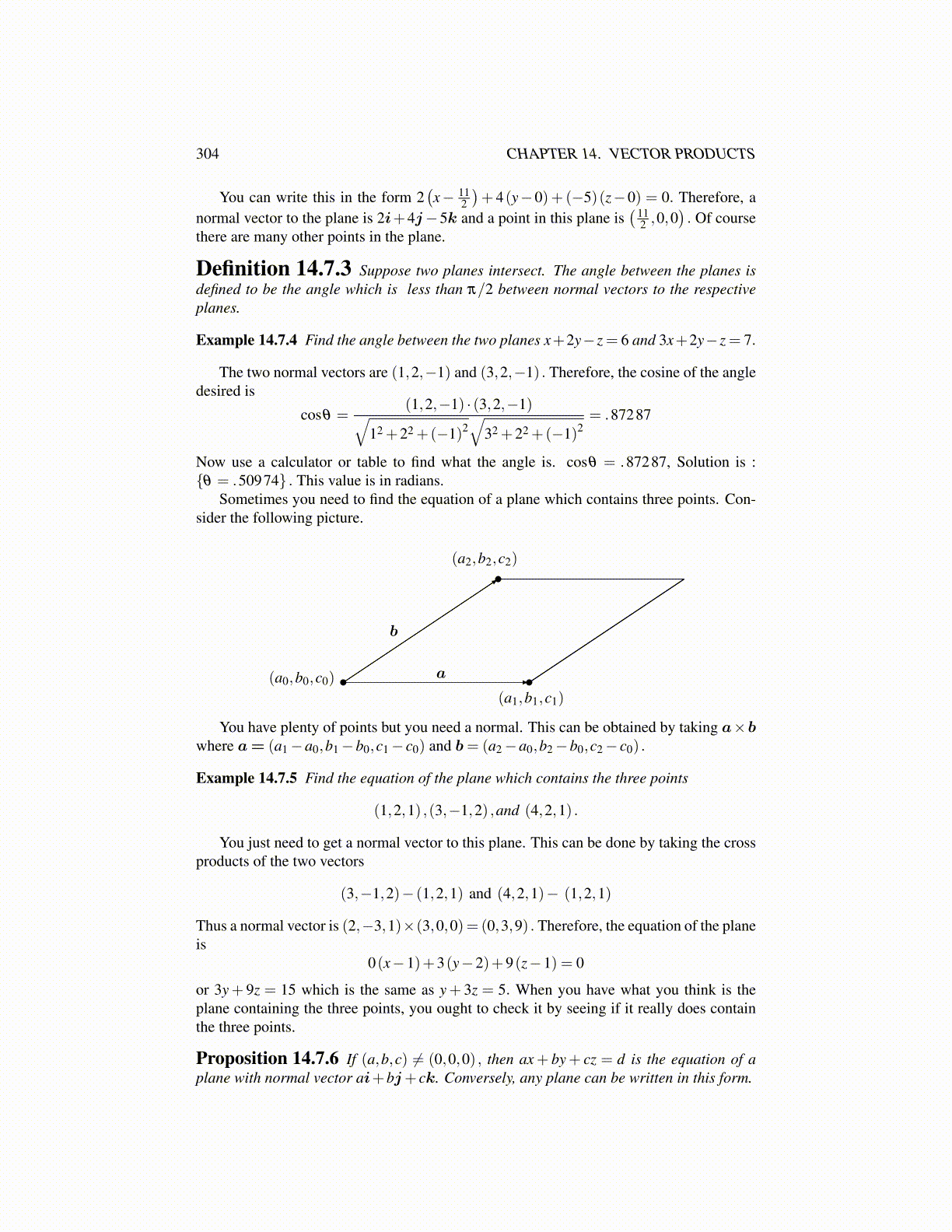
304 CHAPTER 14. VECTOR PRODUCTS
Example 14.7.1 Find the equation of the plane with normal vector n= (1,2,3) contain-ing the point (2,−1,5) .
From the above, the equation of this plane is just
(1,2,3) · (x−2,y+1,z−3) = x−9+2y+3z = 0
Example 14.7.2 2x+4y−5z = 11 is the equation of a plane. Find the normal vector anda point on this plane.
You can write this in the form 2(x− 11
2
)+ 4(y−0)+ (−5)(z−0) = 0. Therefore, a
normal vector to the plane is 2i+4j−5k and a point in this plane is( 11
2 ,0,0). Of course
there are many other points in the plane.
Definition 14.7.3 Suppose two planes intersect. The angle between the planes isdefined to be the angle which is less than π/2 between normal vectors to the respectiveplanes.
Example 14.7.4 Find the angle between the two planes x+2y−z = 6 and 3x+2y−z = 7.
The two normal vectors are (1,2,−1) and (3,2,−1) . Therefore, the cosine of the angledesired is
cosθ =(1,2,−1) · (3,2,−1)√
12 +22 +(−1)2√
32 +22 +(−1)2= .87287
Now use a calculator or table to find what the angle is. cosθ = .87287, Solution is :{θ = .50974} . This value is in radians.
Sometimes you need to find the equation of a plane which contains three points. Con-sider the following picture.
(a0,b0,c0)
(a1,b1,c1)
(a2,b2,c2)
a
b
You have plenty of points but you need a normal. This can be obtained by taking a×bwhere a= (a1 −a0,b1 −b0,c1 − c0) and b= (a2 −a0,b2 −b0,c2 − c0) .
Example 14.7.5 Find the equation of the plane which contains the three points
(1,2,1) ,(3,−1,2) ,and (4,2,1) .
You just need to get a normal vector to this plane. This can be done by taking the crossproducts of the two vectors
(3,−1,2)− (1,2,1) and (4,2,1)− (1,2,1)